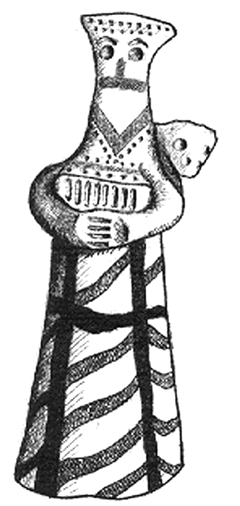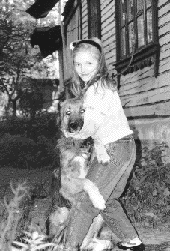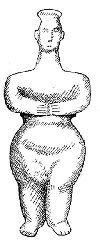|

From behind a clay figurine made in Ryazan few decades
ago the same old serpent pops its head. Tall kokoshnik-like woman's head-dress
counts many thousand years of history and its design never changed since
then, and neither did that of the figurine shaped by Ryazan peasant artisan.
|
Ornaments used in traditional ethnic craftsmanship also keep their
ancient semantics intact. From traditional folk artisans I learned that
every ornamental element -- every single curve, ringlet, asterisk or fishbone
pattern -- has its unique meaning: wishes of fertility, health, long life,
rich harvest, good cattle-breeding, etc. Combining this information with
data of archeological interpretation of ancient symbols we could probably
read some of primeval ornaments.
Women's adornments are actually elaborate composition of amulets supposed
to safeguard various body parts. All traditional dresses of Russian peasants
have scores of signs symbolizing the Great Goddess on them. Wearing various
embroideries, adornments, tattoos always implied protecting oneself from
evil spells. Even pieces of clayware produced in Ryazan as recently as
in 60's and 70's of this century look completely archaic. In fact, many
of them are but copies of ancient idols of the Great Goddess and her numerous
associates. Still, while in Central Asia folks keep memories of true meaning
of messages from ancient past, Russians have lost it completely. Today
craftswomen making toys have not a slightest idea of what their products
actually designate. And yet their traditional art transmits from generation
to generation the last traces of most ancient times. If properly studied,
it may bring us much closer to understanding our far predecessors' vision
of the world. And it is not improbable that this understanding might be
of great help to modern humanity long out of peace and harmony with Nature.
|

![]()

